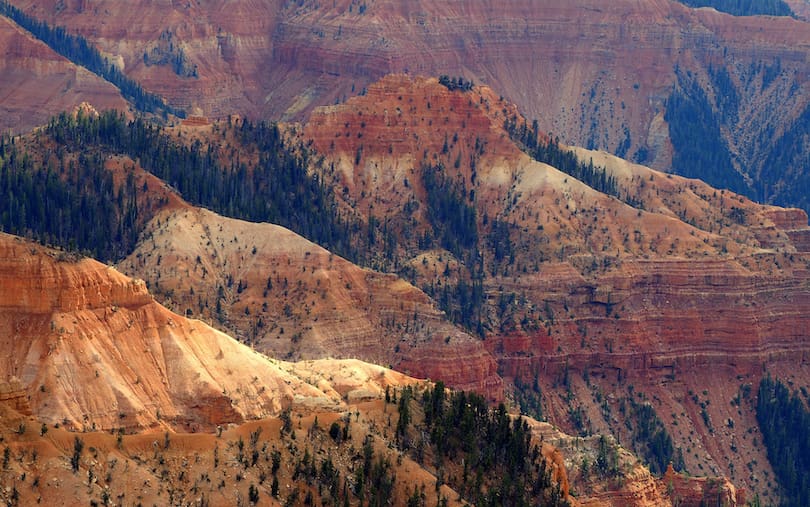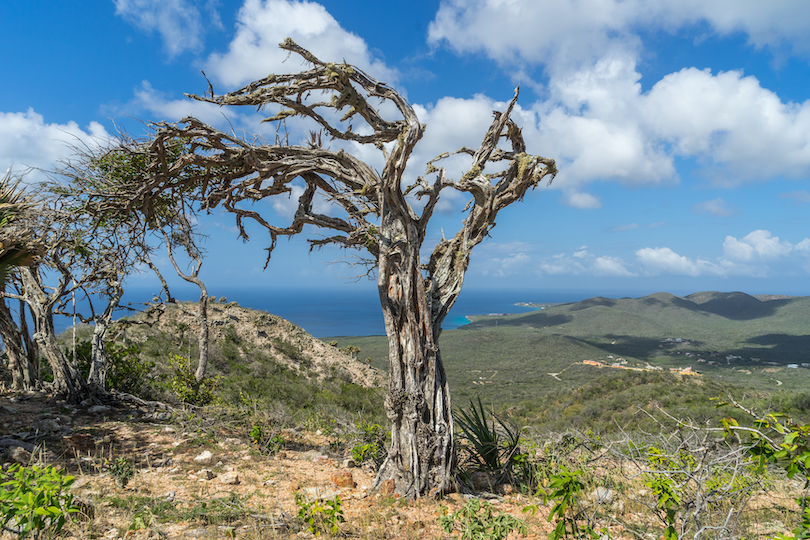Chhattisgarh, often referred to as the “Heart of India,” is a treasure trove of natural beauty and biodiversity. Home to lush forests, majestic wildlife, and serene landscapes, this state offers some of the most captivating national parks in the country. Whether you’re an avid wildlife enthusiast, a nature lover, or simply someone seeking tranquility, the top 5 national parks in Chhattisgarh promise unforgettable experiences. Let’s embark on a journey through these pristine wilderness areas that showcase the rich flora and fauna of the region.
1. Kanger Valley National Park: The Crown Jewel of Chhattisgarh
Why Kanger Valley Stands Out
Nestled in the Bastar district, Kanger Valley National Park is one of the most biodiverse and picturesque national parks in India. Declared a national park in 1982, it spans over 200 square kilometers and is named after the Kanger River that flows through its heart. The park is renowned for its dense sal forests, cascading waterfalls, limestone caves, and diverse wildlife, making it a must-visit destination for nature enthusiasts.
Flora and Fauna
The park is home to a wide variety of plant species, including towering sal trees, bamboo groves, and medicinal herbs. Its rich ecosystem supports a plethora of wildlife, such as:
- Tigers: Kanger Valley is part of the Project Tiger initiative, aimed at conserving the endangered Bengal tiger.
- Leopards: These elusive big cats are often spotted prowling through the dense undergrowth.
- Wild Boars, Sambar Deer, and Chital: These herbivores are commonly seen grazing near water bodies.
- Birdlife: Over 150 species of birds, including hornbills, peafowls, and kingfishers, add color and vibrancy to the park.
Must-Visit Attractions Inside the Park
- Tirathgarh Waterfalls: This stunning waterfall cascades down rocky cliffs, creating a mesmerizing spectacle. It’s a popular spot for picnics and photography. During monsoons, the falls swell with water, creating a thunderous roar that echoes through the valley.
- Kotumsar Caves: Located near the park, these limestone caves stretch for over a kilometer and house unique rock formations and subterranean streams. Guided tours take visitors deep into the caves, where they can marvel at stalactites and stalagmites formed over millions of years.
- Dandakaranya Forests: These ancient forests are steeped in mythology and believed to be part of the Dandakaranya mentioned in the Ramayana. Exploring these forests feels like stepping back in time, with their towering trees and mysterious aura.
Activities for Visitors
- Jungle Safaris: Explore the park’s core zones via jeep safaris or guided treks to witness wildlife up close. Early morning safaris are particularly rewarding, as animals are more active during cooler hours.
- Birdwatching: Early mornings are ideal for spotting rare avian species. Bring binoculars and a field guide to identify birds like the Malabar pied hornbill and Indian paradise flycatcher.
- Cave Exploration: Venture into Kotumsar and Kailash caves for an adventurous experience. While exploring, listen to the sound of underground streams and feel the cool, damp air enveloping you.
Best Time to Visit
The best time to visit Kanger Valley National Park is between November and June when the weather is pleasant, and animals are more active. Avoid visiting during the monsoon season (July to September) due to heavy rainfall and potential flooding.
2. Indravati National Park: A Haven for Tigers and Tribes
Why Indravati is Special
Located in the Bijapur district, Indravati National Park is another gem of Chhattisgarh. Named after the Indravati River, which meanders through the park, this protected area is known for its thriving tiger population and indigenous tribal communities living in harmony with nature.
Unique Features
Indravati is part of the larger Indravati Tiger Reserve and plays a crucial role in tiger conservation efforts. The park’s undulating terrain includes hills, plateaus, and riverine forests, providing a perfect habitat for various species. Its remote location ensures minimal human interference, allowing wildlife to thrive undisturbed.
Wildlife Highlights
- Bengal Tigers: The park boasts a healthy population of tigers, making it a prime location for tiger sightings. However, patience and luck are key, as these elusive predators prefer staying hidden.
- Barasingha (Swamp Deer): This critically endangered species finds refuge in the park’s marshy grasslands. Spotting a herd of barasinghas grazing peacefully is a sight to behold.
- Wild Dogs (Dholes): Known for their pack-hunting behavior, dholes are frequently sighted here. Watching them coordinate during hunts is a thrilling experience.
- Reptiles and Amphibians: Monitor lizards, pythons, and crocodiles thrive in the park’s wetlands. Look out for mugger crocodiles basking along the riverbanks.
Cultural Significance
The park is surrounded by villages inhabited by tribes like the Maria Gonds and Muria Gonds. Their traditional practices and folklore are deeply intertwined with the forest ecosystem. Visiting these villages provides insight into how local communities coexist with wildlife while preserving age-old traditions.
Things to Do
- Nature Walks: Take leisurely walks along designated trails to observe smaller creatures like butterflies and insects. These walks also offer opportunities to learn about medicinal plants used by tribal healers.
- River Rafting: Enjoy a thrilling rafting experience on the Indravati River. The calm stretches allow for peaceful floating, while rapids provide excitement for adventure seekers.
- Tribal Village Tours: Interact with local tribes to learn about their culture, art, and sustainable living practices. Many villagers sell handmade crafts, offering unique souvenirs to take home.
Travel Tips
- Entry permits are required, so apply in advance through the forest department or authorized tour operators.
- Carry binoculars and cameras for better wildlife viewing and photography.
- Respect local customs and seek permission before taking photographs of tribal people.
3. Achanakmar Wildlife Sanctuary: A Biodiversity Hotspot
What Makes Achanakmar Unique
Situated in the Bilaspur district, Achanakmar Wildlife Sanctuary is a UNESCO World Heritage Site and part of the Achanakmar-Amarkantak Biosphere Reserve. Covering an expansive area of 550 square kilometers, the sanctuary is a haven for biodiversity and ecological research. Its proximity to Amarkantak, the source of the Narmada River, adds to its spiritual significance.
Key Attractions
- Tiger Conservation: As part of Project Tiger, Achanakmar has successfully increased its tiger population over the years. Dedicated anti-poaching squads patrol the area to ensure the safety of these majestic animals.
- Butterfly Garden: A dedicated section of the sanctuary houses numerous butterfly species, attracting entomologists and nature lovers alike. The vibrant colors and patterns of these winged beauties are mesmerizing.
- Herbal Gardens: These gardens cultivate medicinal plants used in traditional Ayurvedic treatments. Guided tours explain the uses of each plant, highlighting the importance of preserving indigenous knowledge.
Wildlife Encounters
- Elephants: Herds of wild elephants can often be seen roaming freely. Elephant corridors connect Achanakmar to nearby forests, facilitating genetic exchange among populations.
- Sloth Bears: These shy yet fascinating creatures are occasionally spotted in the thickets. Their distinctive shaggy fur and long claws make them easy to identify.
- Avifauna: The sanctuary is home to migratory birds like the Indian pitta and paradise flycatcher. Birdwatchers flock here during winter months to catch glimpses of these colorful visitors.
Visitor Activities
- Jeep Safaris: Explore the sanctuary’s interiors while accompanied by experienced guides. Safaris operate twice daily—early morning and late afternoon—for optimal wildlife sightings.
- Nature Camps: Stay overnight in eco-friendly campsites to immerse yourself in the wilderness. Evening bonfires and storytelling sessions create a cozy atmosphere under the stars.
- Educational Programs: Participate in workshops conducted by forest officials to understand conservation efforts. Learn about camera traps, radio collars, and other tools used to monitor wildlife.
Best Time to Visit
Plan your visit between October and March for optimal weather conditions and higher chances of animal sightings. Summers (April to June) can be extremely hot, while monsoons (July to September) may disrupt travel plans.
4. Barnawapara Wildlife Sanctuary: Offbeat Wilderness
Discovering Barnawapara
Spread across 245 square kilometers in the Mahasamund district, Barnawapara Wildlife Sanctuary is a lesser-known but equally enchanting destination. Despite its relatively small size, the sanctuary teems with life and offers a peaceful escape from urban chaos. Its name derives from two rivers—Bar and Nawapara—that flow through the area.
Ecological Importance
The sanctuary lies in the catchment area of the Mahanadi River and serves as a vital corridor for wildlife movement between central India’s forests. Its mixed deciduous forests and open grasslands create a conducive environment for diverse species. The sanctuary’s strategic location makes it a crucial link in the Central Indian Tiger Landscape.
Notable Wildlife
- Leopards: These stealthy predators dominate the food chain within the sanctuary. Spotting a leopard lounging on a tree branch is a rare treat.
- Gaur (Indian Bison): The largest bovine species in the world roams freely here. Gaurs are known for their massive build and striking appearance.
- Four-Horned Antelope: Rare and elusive, this antelope is a prized sighting for wildlife enthusiasts. Its compact size and distinctive horns set it apart from other ungulates.
- Snakes and Reptiles: Russell’s vipers, cobras, and monitor lizards are common residents. Keep an eye out for snakes basking in sunny spots.
Activities for Nature Lovers
- Guided Treks: Traverse marked trails to discover hidden gems like waterholes and bird nests. Guides share interesting facts about the sanctuary’s flora and fauna along the way.
- Photography: Capture candid moments of animals in their natural habitat. Early mornings and late evenings offer the best lighting for photography.
- Picnicking: Spend quality time with family amidst the greenery. Designated picnic spots provide basic amenities like benches and restrooms.
Tips for Visitors
- Wear neutral-colored clothing to blend into the surroundings and avoid startling animals.
- Respect local guidelines and maintain silence during safaris to minimize disturbance to wildlife.
- Carry sufficient water and snacks, as facilities inside the sanctuary are limited.
5. Udanti-Sitanadi Tiger Reserve: Untouched Wilderness
Exploring Udanti-Sitanadi
Located in the Gariaband district, Udanti-Sitanadi Tiger Reserve is a relatively unexplored gem. Comprising two distinct sanctuaries—Udanti and Sitanadi—it covers an area of 1,842 square kilometers and forms part of the Central Indian Tiger Landscape. The reserve’s vast expanse and dense vegetation make it a challenging yet rewarding destination for wildlife enthusiasts.
Rich Biodiversity
The reserve harbors a mix of dry deciduous and moist peninsular Sal forests, supporting a wide range of flora and fauna. It acts as a critical link between other tiger reserves in Madhya Pradesh and Odisha, ensuring genetic diversity among wildlife populations.
Star Attractions
- Tigers: Although sightings are rare due to dense foliage, the reserve hosts a significant tiger population. Patience and multiple safaris increase your chances of encountering these magnificent cats.
- Wild Buffaloes: These massive herbivores are a highlight of the reserve. Wild buffaloes play a crucial role in maintaining the health of grasslands by grazing selectively.
- Flying Squirrels: Nocturnal and agile, these squirrels glide gracefully between trees. Night safaris offer the best opportunity to spot them.
- Orchids and Ferns: The reserve’s botanical wealth includes several endemic plant species. Orchids bloom during specific seasons, adding bursts of color to the forest floor.
Things to Do
- Night Safaris: Experience the thrill of nocturnal wildlife spotting. Armed with flashlights and spotlights, guides lead groups through the forest, searching for owls, civets, and other night-active creatures.
- Camping Under the Stars: Set up camp in designated areas to enjoy stargazing and bonfires. Listening to the sounds of the jungle at night creates a sense of connection with nature.
- Riverside Relaxation: Unwind by the banks of the Sitanadi River, listening to the soothing sounds of flowing water. Fishing is prohibited, but you can dip your feet in the cool water to refresh yourself.
Best Time to Visit
The cooler months from December to February are ideal for exploring Udanti-Sitanadi Tiger Reserve. Temperatures remain comfortable, and animals are more likely to venture out in search of water.
Travel Tips for Visiting Chhattisgarh’s National Parks
- Permits and Permissions: Most parks require prior booking and entry permits. Check official websites for details on application processes and fees.
- Accommodation Options: Forest rest houses, eco-lodges, and nearby resorts offer comfortable stays. Book accommodations well in advance, especially during peak tourist seasons.
- Safety Precautions: Follow all safety instructions provided by park authorities. Avoid venturing off marked paths and always stay with your group during safaris.
- Packing Essentials: Carry essentials like sunscreen, insect repellent, sturdy shoes, rain gear, and a first-aid kit. Binoculars and cameras are highly recommended for wildlife observation and photography.
Other Noteworthy Sanctuaries in Chhattisgarh
While the above five parks are the highlights, Chhattisgarh has other noteworthy sanctuaries worth exploring:
- Guru Ghasidas National Park: Known for its rugged terrain and diverse wildlife, including leopards and sloth bears.
- Tamor Pingla Wildlife Sanctuary: Famous for its large elephant herds and scenic landscapes.
- Semarsot Wildlife Sanctuary: A lesser-explored sanctuary with abundant biodiversity, including tigers and wild dogs.
Conclusion
Chhattisgarh’s national parks and wildlife sanctuaries are a testament to the state’s commitment to preserving its natural heritage. By visiting the top 5 national parks in Chhattisgarh , you not only get to witness incredible wildlife but also contribute to conservation efforts. These pristine landscapes offer a chance to reconnect with nature and appreciate the delicate balance of ecosystems. Whether you’re chasing tigers, marveling at waterfalls, or immersing yourself in tribal culture, Chhattisgarh promises an unforgettable adventure.
Frequently Asked Questions (FAQs)
- Which is the best national park in Chhattisgarh for tiger sightings?
- Kanger Valley National Park and Indravati National Park are excellent choices for spotting tigers.
- How do I reach Kanger Valley National Park?
- The nearest airport is in Raipur, approximately 300 km away. From there, hire a taxi or take public transport to Jagdalpur, which is closer to the park.
- Are safaris available in all these parks?
- Yes, most parks offer jeep safaris, and some provide guided walking tours.
- What should I carry for a jungle safari?
- Binoculars, sunscreen, insect repellent, comfortable shoes, and a camera are essential items.
- Can I stay inside the national parks?
- Many parks have forest rest houses and eco-lodges for overnight stays.
- Is monsoon season suitable for visiting these parks?
- While the scenery is lush during monsoons, roads may become inaccessible, and certain activities might be restricted.
- Are there any tribal villages near these parks?
- Yes, several parks, like Indravati, are surrounded by tribal settlements where you can experience local culture.
- What is the entry fee for these national parks?
- Fees vary depending on the park and type of safari. Check official websites for updated information.
- Are children allowed on safaris?
- Yes, children are welcome, but they must adhere to safety rules.
- Do I need a guide for exploring the parks?
- It’s highly recommended to hire a certified guide for a safer and more informative experience.


















